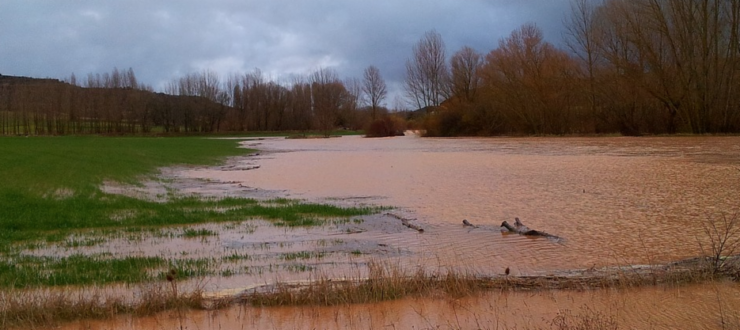
Flooding of pastures or hayfields occurs with regularity in some or many areas in most years, especially in fields located near creeks or rivers. Obviously, there are limits to the amount of flooding a forage stand can tolerate. Therefore, it is common for questions regarding this topic to arise. In particular, this often occurs when a producer wants to establish a forage stand in an area known, or suspected, to be flood-prone.
During the time a field is flooded, oxygen uptake by plant roots is eliminated or at least severely restricted. Even after water recedes, soil may be waterlogged for quite some time, which can also have serious negative effects on plant functions. These include nutrient uptake, photosynthesis, and nitrogen fixation by forage legumes.
As is the case with many aspects of nature, the response of plants to flooding is complex. Therefore, it is dangerous to make statements about what length of time a forage stand will tolerate being flooded. This is one of the reasons why this topic is rarely addressed in articles or educational presentations.
Among the factors that affect the impact of flooding are the soil type(s) and the level of the water table in the flooded area. Other things being equal, flooding is more likely to have a negative impact on a forage stand in an area where there is heavy clay soil and a high water table, than where there is sandy soil and a deep water table. This is mainly because a field in the latter category does not remain waterlogged for as long a period of time once water recedes.
In addition, the higher the temperature, the fewer days of flooding most forage crops will tolerate. If the weather is cool enough that forage plants are dormant or semi-dormant, it is much less likely that plants will die. Since flooding is more common in late winter and spring in most areas, this often gives warm season species an advantage.
A sheet of ice over a flooded field reportedly increases the likelihood of plant death. Other things being equal, standing water is potentially more harmful and likely to be lethal than flowing water. Also, severe damage is less likely for plants that have some leaves protruding from the water.
Forage species also makes a big difference. Ranges of the number of days some forage crops are likely to be able to tolerate flooding is provided below. This information is based on limited research at several locations, together with reports of observations of the impact of flooding. Numerous commonly grown forage crops were not included due to a lack of information.
Tolerant Of Prolonged Flooding (30+ Days)- Bermudagrass, reed canarygrass, timothy
Tolerant Of Intermediate Lengths Of Flooding (7 to 30 Days)- Alfalfa, annual lespedeza, big bluestem, red clover, white clover, tall fescue, johnsongrass, sericea lespedeza, orchardgrass, annual ryegrass, switchgrass. (Red clover and especially alfalfa are at the lower end of this range.)
Tolerant Of Brief Flooding Only- Small grains (rye, wheat, oats, barley, triticale), crimson clover, arrowleaf clover
Because multiple factors are involved in flooding tolerance, in reality one must “wait and see” what happens when flooding occurs. However, the information provided gives a general idea as to the relative tolerance of some forage crops to flooding (and is offered in accordance with the idea that incomplete information is better than no information).
Prolonged waterlogged soil conditions can have a serious negative effect on plant growth, regardless of the length of time a field or portion of a field was flooded, or even if there was no actual flooding. A pasture that has been flooded should not be grazed closely for an extended period thereafter because there could be contamination close to the soil level. Hay bales that have been flooded will likely be of little or no feed value.
__________________
Foraging Ahead is a column presented by Ragan & Massey and written by Dr. Don Ball, Professor Emeritus at Auburn University. Dr. Ball is one of the authors of the popular book “Southern Forages” available here.
